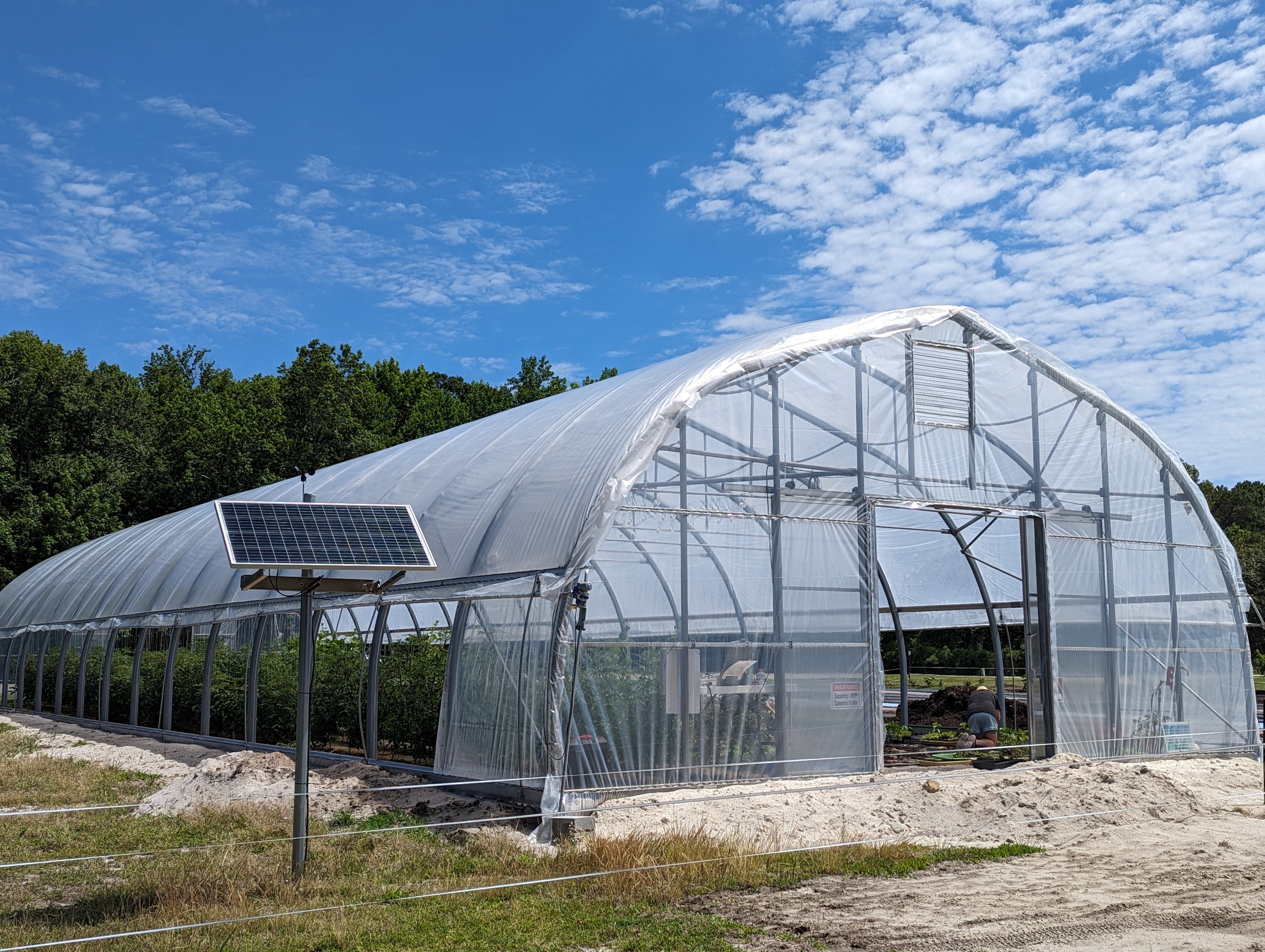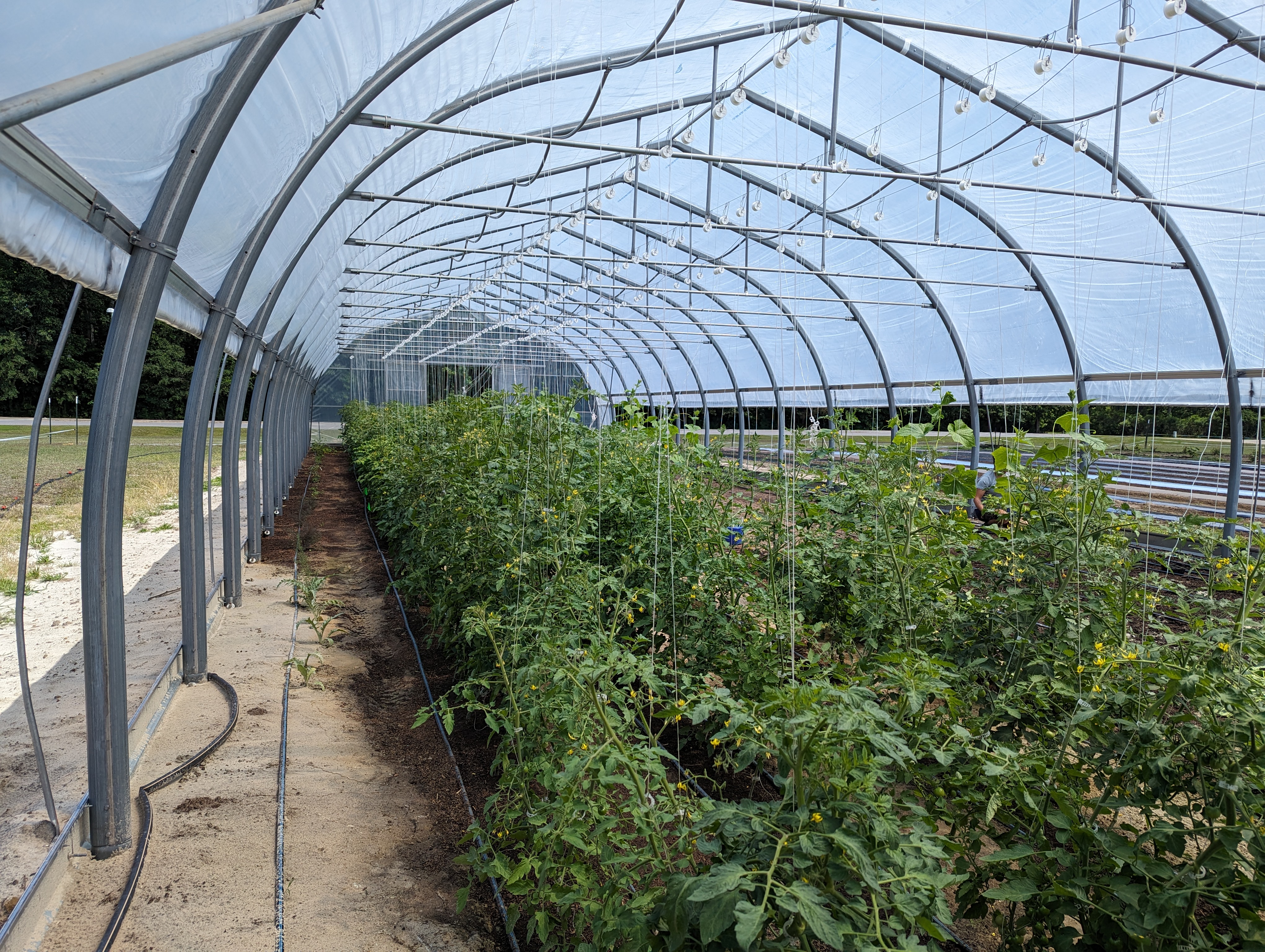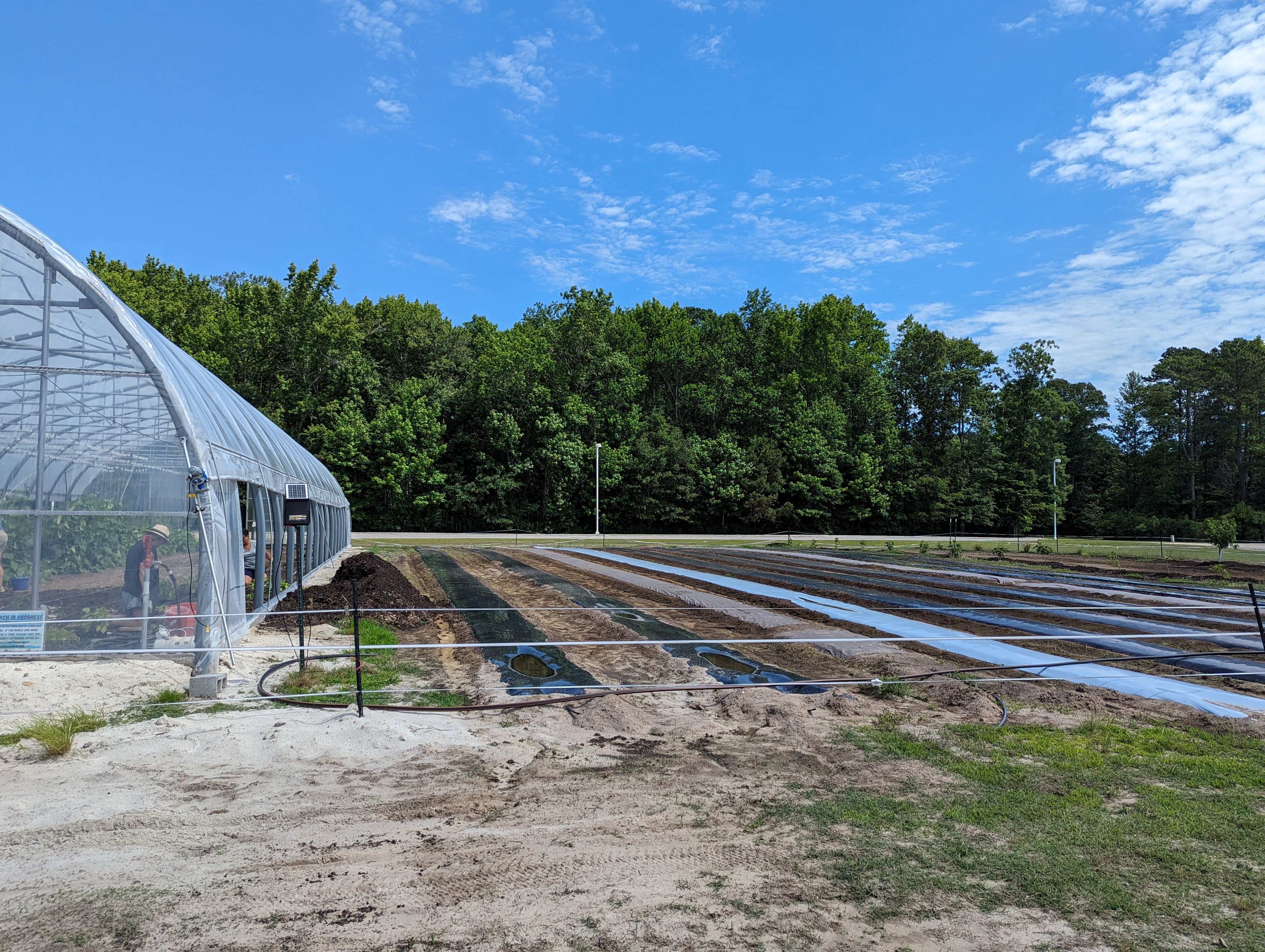High Tunnel Demonstration Site
go.ncsu.edu/readext?938227
en Español / em Português
El inglés es el idioma de control de esta página. En la medida en que haya algún conflicto entre la traducción al inglés y la traducción, el inglés prevalece.
Al hacer clic en el enlace de traducción se activa un servicio de traducción gratuito para convertir la página al español. Al igual que con cualquier traducción por Internet, la conversión no es sensible al contexto y puede que no traduzca el texto en su significado original. NC State Extension no garantiza la exactitud del texto traducido. Por favor, tenga en cuenta que algunas aplicaciones y/o servicios pueden no funcionar como se espera cuando se traducen.
Português
Inglês é o idioma de controle desta página. Na medida que haja algum conflito entre o texto original em Inglês e a tradução, o Inglês prevalece.
Ao clicar no link de tradução, um serviço gratuito de tradução será ativado para converter a página para o Português. Como em qualquer tradução pela internet, a conversão não é sensivel ao contexto e pode não ocorrer a tradução para o significado orginal. O serviço de Extensão da Carolina do Norte (NC State Extension) não garante a exatidão do texto traduzido. Por favor, observe que algumas funções ou serviços podem não funcionar como esperado após a tradução.
English
English is the controlling language of this page. To the extent there is any conflict between the English text and the translation, English controls.
Clicking on the translation link activates a free translation service to convert the page to Spanish. As with any Internet translation, the conversion is not context-sensitive and may not translate the text to its original meaning. NC State Extension does not guarantee the accuracy of the translated text. Please note that some applications and/or services may not function as expected when translated.
Collapse ▲
A high tunnel (pictured above) is a structure used for growing plants. High tunnels increase the quality and yield of fruits and vegetables grown in a relatively small area by controlling some environmental conditions that impact plant growth and production.
Similar to a green house, a high tunnel uses one or two layers of plastic to protect the plants from rain, wind and cold while still providing adequate sunlight for plant growth. Plastic sidewall curtains can be raised or lowered based on temperature, humidity and wind speed. (See image below). This allows for ventilation and temperature control in the high tunnel.

Unlike a greenhouse, plants are grown directly in the ground in a high tunnel. (See image below). Typically, high tunnels use the sun as the only source of heat, while greenhouses have heaters powered by electricity and other fuel.






